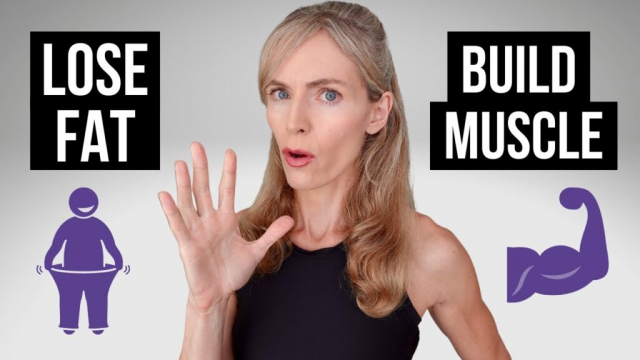
Losing fat and building muscle simultaneously is often seen as an impossible task, but it is actually achievable for most people. In this blog post, we will discuss specific tips on how to achieve this goal and also address the small group of individuals who may struggle with it.
The first step in losing fat and building muscle is to ensure that you are consuming enough protein. It is generally recommended to consume 0.8 to 1 gram of protein per pound of body weight. Protein is essential for maintaining and building muscle mass. Additionally, including protein in your meals can help you feel fuller for longer, reducing the likelihood of overeating high-calorie foods that can lead to fat gain.
Setting up your calorie intake correctly is also crucial for achieving body recomposition. If you are tracking your calories, whether you should be in a calorie deficit or maintenance will depend on your current status and proximity to your goal. If you have excess weight to lose, being in a calorie deficit is recommended. This means consuming fewer calories than your body needs to sustain itself. By doing so, your body will tap into its energy stores (body fat) to provide the necessary energy, resulting in fat loss. For men, a body fat percentage of 25% or higher may indicate the need for a calorie deficit, while for women, a body fat percentage of 30% or higher may warrant the same approach.
On the other hand, if you are relatively lean and your primary goal is to build muscle, you may need to eat in a calorie surplus. This means consuming more calories than your body needs to fuel muscle growth. It is challenging to simultaneously build muscle and lose fat, especially for individuals who have already optimized their training and nutrition. Generally, when aiming to gain a significant amount of muscle, a small amount of fat gain may also occur. However, once you have achieved your desired muscle mass, you can slightly decrease your calorie intake to lean out while maintaining muscle mass.
Training with weights is essential for stimulating muscle growth. Whether it is strength training or bodyweight training, progressively increasing the intensity or weight is crucial for building muscle effectively. It is recommended to engage in weight training sessions three to five times a week. A full-body workout three times a week is a practical and efficient approach for many individuals. However, if you have the time and capacity, four to five weight training sessions per week may yield even better results.
In addition to weight training, incorporating physical activity that expends calories is important. This does not necessarily mean cardio exercises. While it is generally recommended to engage in 20 to 30 minutes of cardio three times a week, activities like walking can also contribute to calorie burn and overall health.
If you are not tracking your calories, it is still important to keep an eye on your protein intake. Protein is the most important macronutrient for retaining muscle mass and controlling appetite. By ensuring an adequate protein intake, you can maintain muscle while losing fat.
It is important to note that losing more than 0.8 to 1% of your body weight per week can put you at risk of losing muscle mass. Therefore, it is crucial to monitor your progress and make adjustments accordingly to prevent muscle loss.
In conclusion, losing fat and building muscle simultaneously is achievable for most people. By consuming enough protein, training with weights, setting up your calorie intake correctly, and incorporating physical activity, you can work towards achieving body recomposition. However, it is important to recognize that individuals who have already optimized their training and nutrition may find it challenging to simultaneously build muscle and lose fat. It is recommended to focus on one goal at a time and make adjustments as necessary.
Read More: How to Build Muscle, According to Science

